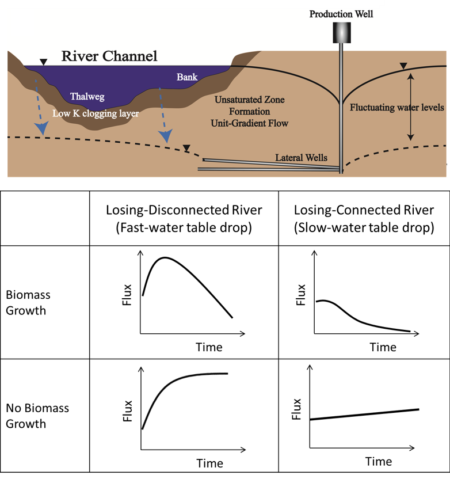Scientific Achievement
Our research provides a numerical modeling approach predicting the impact of natural bioclogging processes in rivers, including an explanation for why variable connection and disconnection between rivers and aquifers occurs. Our study highlights that consideration of riverbed dynamic permeability coupled with the connection status of the river is required for accurate prediction of infiltration dynamics.
Significance and Impact
Bioclogging in rivers can detrimentally impact aquifer recharge. This is particularly so in dry regions, where losing rivers are common, and where disconnection between surface water and groundwater (leading to the development of an unsaturated zone) can occur. Reduction in riverbed permeability due to biomass growth is a time-variable parameter that is often neglected, yet permeability reduction from bioclogging can introduce order of magnitude changes in seepage fluxes.
Research Details
- We developed numerical representations of bioclogging processes within a one-dimensional, variably-saturated flow model representing losing-connected and losing-disconnected rivers
- We tested these formulations using a synthetic case study informed with biological data obtained from the Russian River, California, U.S.A.
- Modeled biomass growth reduced seepage for losing-connected and losing-disconnected rivers
Citation
Newcomer, M. E., Hubbard, S. S., Fleckenstein, J. H., Maier, U., Schmidt, C., Thullner, M., et al. (2016). Simulating bioclogging effects on dynamic riverbed permeability and infiltration. Water Resources Research, 52(4), 2883–2900. DOI: 10.1002/2015WR018351

